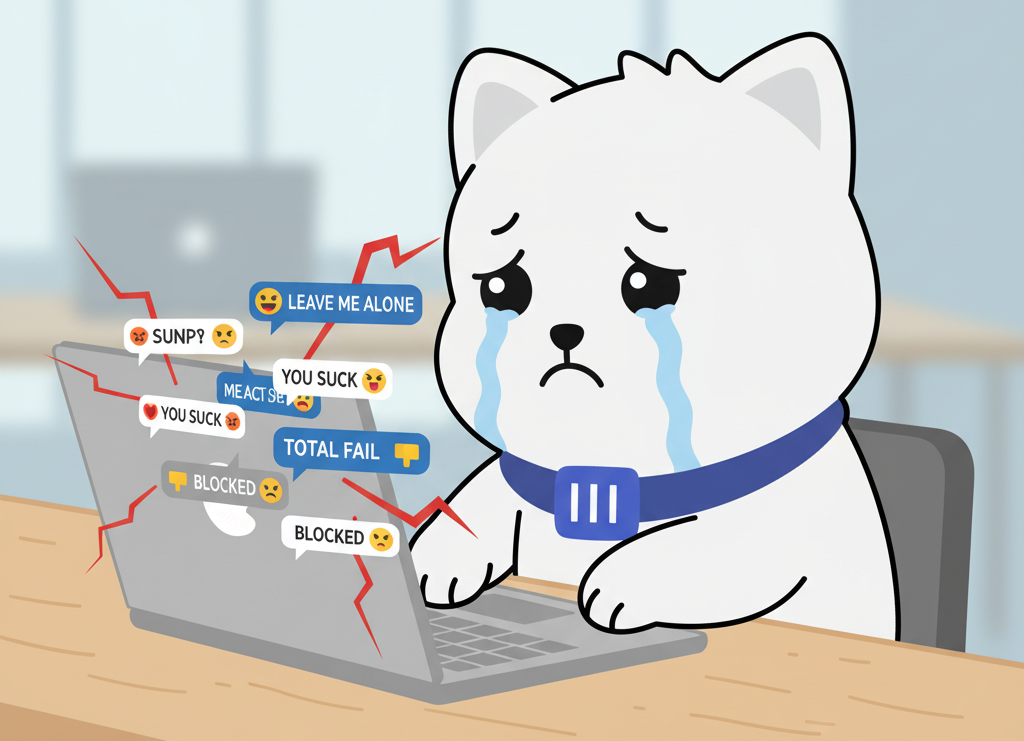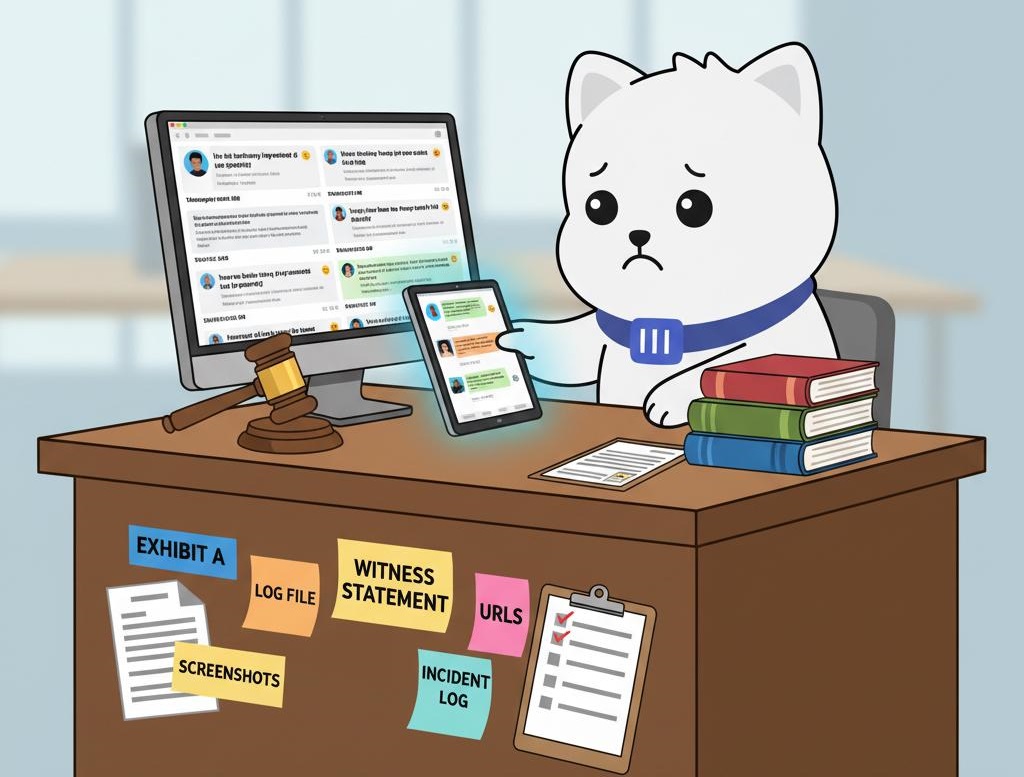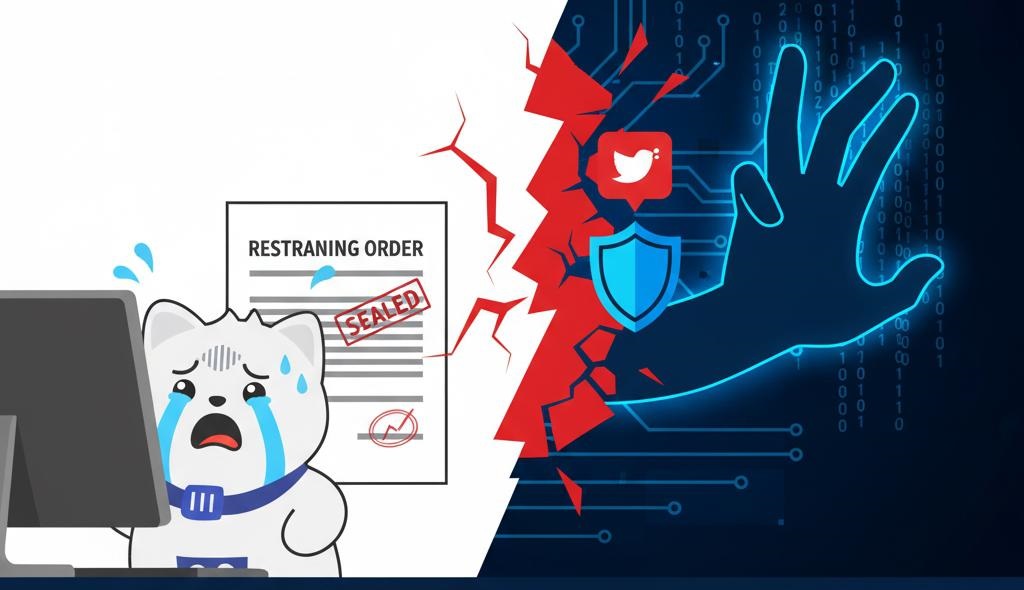
Can You Get a Restraining Order for Social Media Harassment?
Categories: Data Privacy, Digital Footprint, Social Media
Are you in immediate danger?
Call your local emergency number right now. If there are threats of violence, make a police report and keep the report number with your evidence.
Online harassment & the court system
Online harassment can feel inescapable. Even when the abuse is happening on a screen, the fear and disruption are real. The law has been catching up.
In many places, courts do issue protection orders for digital abuse when the conduct meets legal thresholds. Names vary by location, and you may see terms like civil harassment order, anti-stalking order, no-contact order, or a domestic violence protective order when a partner or family member is involved. This article is general information, not legal advice.
When online behavior crosses the line
Harassment is more than a rude comment. Courts look for a pattern of unwanted contact that would make a reasonable person feel unsafe or severely distressed. That can include repeated messages or comments, posting personal data to invite abuse, targeted impersonation, or threats toward you or people close to you. Cyberstalking overlaps with harassment but is often a criminal offense focused on sustained monitoring, intimidation, or credible threats. Rudeness or criticism alone is often protected. Patterns, intent, and impact carry the case.
What a restraining order can and cannot do
A well written order can bar direct and indirect contact, including messages, comments, tags, replies, and new accounts created to reach you. Judges can prohibit sharing your personal data or encouraging others to contact you, and many orders set stay-away distances for home, school, or work. In some places, orders also require surrender of firearms. What orders usually cannot do is force platforms to remove posts or ban all speech about you. Content removal still runs through platform rules, not the court order.

Evidence that persuades a judge
Judges decide on evidence, not impressions. Capture first, then block or report. Full-frame screenshots should show the handle, date, time, and any visible URL. Short screen recordings are useful for videos or live sessions. Save profile links and user IDs, and export message threads where possible. Keep a simple incident log with date, time, platform, handle, the link, what happened, the effect on your life, and what you did next. Consistent, dated entries make it easier to tell a clear story in court.
The process in plain language
Most people start at a local courthouse with forms for a civil harassment or anti-stalking order. Self-help centers, where available, can walk you through paperwork. If there is immediate risk, you can ask for a temporary order that lasts until a hearing. A police report often strengthens your file, especially when threats are involved, but many courts do not require one to accept a petition. After filing, the other party must be served. At the hearing, bring printed evidence and your log, and explain the pattern in short, concrete terms. If a final order is granted, read the terms closely, carry a copy, and share one with school or work if that improves safety.
State Resources
Northeast & Mid-Atlantic
- Connecticut Portal / remote filing (where available) | Court page Remote options, but filing steps vary by court.
- New York EDDS / e-delivery | Court page Electronic delivery to Family Court in many counties.
- Virginia I-CAN! Virginia | Court page Guided forms; print and file with the proper court.
South
- Florida E-Filing Portal | Court page Check the circuit’s rules for self-represented e-filing.
- Tennessee Order of Protection forms | Court page Some counties have online request helpers; there’s no single statewide “TOPS” system.
- Texas eFileTexas | Court page Many counties accept e-filing; local practice still matters.
Midwest
- Kansas KS Protection Order Portal (KSPOP) | Court page Statewide online start; correct name is KSPOP.
- Missouri Order of Protection forms | Court page File at local circuit court; no “I-CAN! Missouri.”
West
- Arizona AZPOINT | Court page Guided interview; still file with a court.
- Oregon iForms / Guide & File | Court page Some counties accept e-submission.
- Washington State protection-order portal | Court page Many counties allow online submission.
Links change; verify your local court’s current procedure before filing. This is general information, not legal advice.
Anonymous or out-of-state harassers
You can still document and report. Save platform responses to your reports. Courts can allow subpoenas for account records if legal standards are met, though timing and scope vary by platform.
If the person is in another state or country, You can usually file where you live or where the online conduct occurred, but cross-state or international cases may require additional steps for service or enforcement. Service and enforcement may take longer, so plan for that timeline.

If the order is violated
Treat violations seriously. Save new evidence, update your log, and contact police when the order forbids the contact. Ask the court clerk how to pursue contempt or other remedies in your jurisdiction.
First 24 hours and the week that follows
Do not engage with the harasser. Capture what you can before you block or restrict. Turn on two-factor authentication and login alerts. Tighten who can tag or message you, remove location details from bios and recent posts, and ask friends to avoid tagging your home, school, or workplace for a while.
Consider using an app like Redact to search for and remove large amounts of social media posts. It can not only save you immense amounts of time
If you see any threat of violence, call local emergency services and consider filing a police report to backstop your court petition. Over the next week, review privacy settings on each platform and consider moving sensitive personal updates to a private account while the situation stabilizes.

What to bring to court
Bring printed screenshots and recordings with a short index, your incident log, and a concise written statement that explains the pattern, the impact on your life, and the protection you are asking for. Include any police reports and any platform notifications that confirm rule violations or account actions.
Myths and facts
It is a myth that you cannot get a restraining order for online behavior. Many courts do issue orders that cover digital contact, provided the legal thresholds are met. It is also a myth that blocking ruins your case. Blocking is fine after you collect evidence. Another common myth is that an order deletes posts. Orders restrict the person. Platforms decide on content removal under their own policies.
Important disclaimer
Laws and procedures vary by location. Many courts waive filing fees in stalking or harassment cases, and local legal aid or victim services can help with forms and hearing preparation. This article is informational and does not replace advice from a lawyer who knows your jurisdiction.

FAQs: restraining orders & social media harassment
1) Can I get a restraining order if the abuse is only online?
Often yes. Many places allow civil harassment or anti-stalking orders that cover digital contact when the behavior meets legal thresholds. If the person is a current or former partner or a family member, a domestic violence order may apply. Rules vary by location.
2) Do I need a police report before I file?
Not always. A report can help, especially if there are threats or safety concerns. Many courts still accept petitions without one. If you feel unsafe, call local emergency services and make a report.
3) How much evidence is enough?
Patterns help. One serious threat can be enough in some places. Judges usually want dates, times, handles, links, and the impact on you. Take full-frame screenshots, save links and user IDs, and keep a dated incident log.
4) Can an order stop DMs, tags, or new accounts contacting me?
Yes. Orders can forbid direct and indirect contact by any method. Judges can also bar posting your personal data or encouraging others to target you. Courts are cautious about broad bans on all speech.
5) Will a judge make platforms remove posts or reveal who is behind an account?
Courts usually restrict the person, not the platform. Takedowns happen through platform policies. Identity information may be sought with subpoenas or court orders when legal standards are met, but timing and scope vary.
6) What if the harasser is anonymous or lives in another state or country?
You can still document, report to the platform, and often file where you live or where the conduct occurred online. Service and enforcement can take longer across borders. International cases can require local counsel.
7) Will blocking them hurt my case?
No. Capture evidence first, then block or restrict. Keep logging any new accounts or indirect contact and report those too.
8) How long do restraining orders last, and how fast can I get one?
Temporary orders can be issued quickly in some jurisdictions, sometimes the same or the next court day. Hearings are often set within days or weeks. Final orders may last months or years and are sometimes renewable. Filing fees are often reduced or waived for harassment or stalking cases.
9) Do I need a lawyer?
Not necessarily. Many courts offer self-help forms and clinics. A lawyer or legal aid can improve paperwork and hearing prep, which is useful when facts are complex or the other side is anonymous.
10) What should I do if they violate the order online?
Save the new evidence at once. Update your log. Follow the instructions in your order about contacting police or the court. Violations can lead to arrest or contempt. Do not engage with the person.
Important: This page is general information, not legal advice. Laws and procedures vary by location. Consider contacting a local legal-aid organization or attorney for guidance in your jurisdiction.